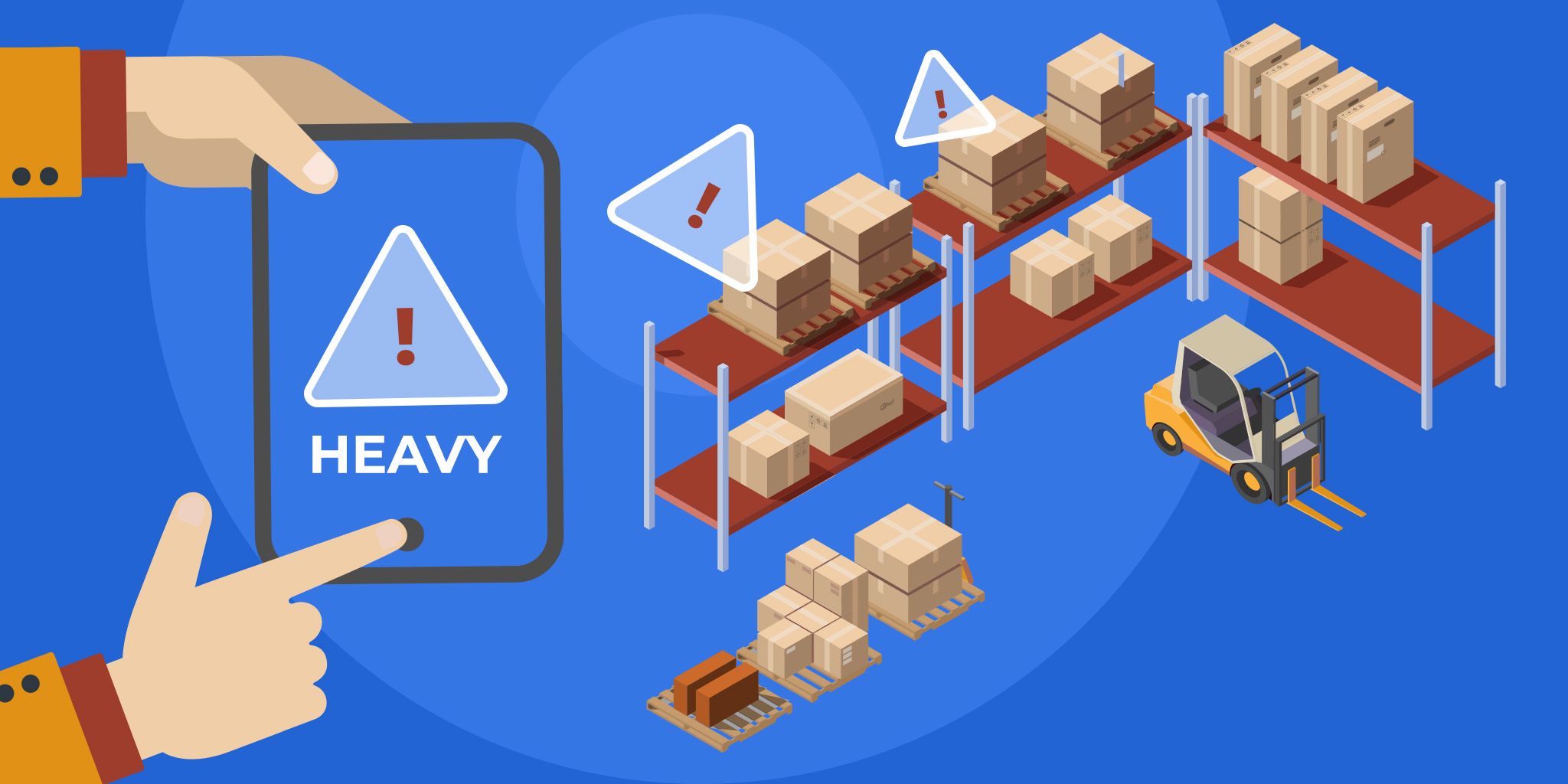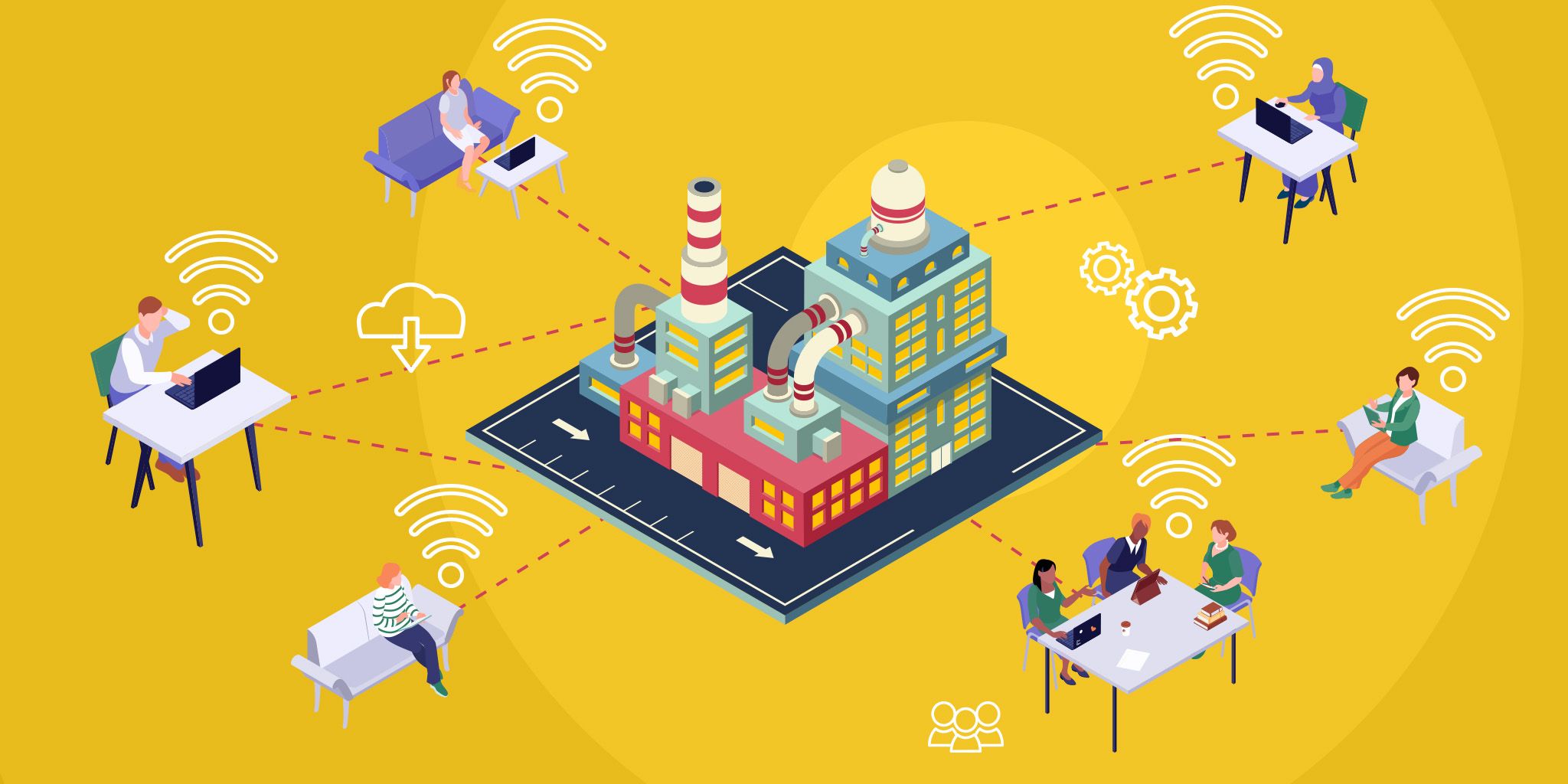Here’s How an End-to-End Intermodal Shipment Tracking System Works
Here’s How an End-to-End Intermodal Shipment Tracking System Works
- Last Updated: December 2, 2024
Roambee
- Last Updated: December 2, 2024
Intermodal shipments are advancing at a dizzying pace, and so is shipment monitoring technology, including intermodal shipment tracking systems. The industry has taken three distinct approaches to intermodal shipment tracking, namely the carrier data aggregation approach, the IoT sensor approach, and a blended ‘sensor + non-sensor’ platform approach. Let’s explore how these three approaches address intermodal shipment tracking. We'll also discuss the level of visibility that each of these approaches offers to enable you to achieve On-Time In-Full (OTIF) deliveries and cold chain compliance in multimodal shipping across the road, rail, air, or ocean.
'Multimodal shipping is clearly the future of logistics, especially in a world where shipping distances are increasing.' -Roambee
Multimodal shipping is clearly the future of logistics, especially in a world where shipping distances are increasing, and it’s mostly good news if you can efficiently run your intermodal shipment operations.
As per the Global Multimodal Freight Transportation Market report (2020 – 2025), “multimodal transport can improve transportation efficiency by 30 percent, reduce cargo damage by 10 percent, reduce transportation costs by 20 percent, reduce highway congestion by more than 50 percent, and promote energy savings and emissions reduction by more than one third.”
But this kind of exponential growth also requires the intermodal shipment tracking systems to grow at the same pace in terms of technology and efficiency.
The non-linear flow of intermodal cargo has to rely on scheduled and unscheduled transportation by road, rail, air, and ocean. In such cases, just knowing the whereabouts of the shipment at an order level isn’t enough. One also needs to know the exact shipment location and package condition. Accurate ETA prediction and cold chain compliance are also two of the most important aspects when dealing with intermodal shipments, and most shipments these days involve multiple modes. All this is not possible without a well-implemented intermodal shipment tracking system.
Thanks to technology advancements, you can track a package's journey today. But is it really that easy?
Let’s begin by understanding how complex an intermodal shipping operation is by following a shipment.
The Journey of an Intermodal Shipment
Let's visualize the steps in an LCL (Less Than Container Load) ocean shipment from Kuala Lumpur in Malaysia to Chicago in the United States.
- Picked up from the consignor in Kuala Lumpur city.
- Hauled to the nearby consolidation warehouse in Kuala Lumpur; combined with other LCLs.
- Hauled to another consolidation location for containerization.
- Container is then hauled to Port Klang, the nearest seaport.
- Container is checked in and export customs clearance at Port Klang in Malaysia.
- Container is placed in the right bay awaiting its vessel journey.
- Once the vessel arrives, it is loaded onto the vessel and reaches the New York port in the US.
- Between Kuala Lumpur and New York, the container could undergo transshipment at another port.
- Upon reaching New York, the container is unloaded and placed in the right bay to await import clearance processes.
- Within port operations, it may move locations multiple times to complete the clearance checklist.
- Upon successful clearance, the container is hauled for deconsolidation.
- After deconsolidation, it undertakes its last-mile journey to Chicago and within Chicago for delivery to the consignee.
You will notice that the intermodal shipment in this example is touched (physically handled) at least ten times in the process by different actors in the chain of custody. It travels through 3 different modes, is checked in/out through at least 5 transshipment points, and is consolidated and de-consolidated at least twice.
In an intermodal shipment, i.e., one that involves many of these transporters, transshipment points, and touchpoints, it is often hard to get end-to-end visibility. It is even harder to know if the shipment reached its destination on time and in good condition, especially if the container requires active cooling.
Therefore, let us look at the approaches to getting visibility on a multimodal shipment, how they work, and which one would best suit a multimodal shipment.
1. Carrier Data Aggregation Approach for Intermodal Shipment Tracking
Real-time transportation visibility platforms (RTTVPs) collect data from the carrier or transporter telematics, ships, flights, and other crowdsourced feeds to offer visibility. Telematics hardware (for the first and last mile) is usually owned by the carriers or transporters and integrated with the visibility platform (if they are present).
Users typically pay a small fee just to access the aggregation platform; there is no cost associated with the hardware. Data from multiple touchpoints are collated and presented on a portal or accessed using APIs.
Drawbacks
This is the easiest route to visibility, but it comes with several drawbacks. These systems don’t solve the challenge of verifiability, data cohesiveness, and actionability as they rely on numerous actors in the supply chain for supplying data.
Here are a few examples of the challenges that multimodal/intermodal shipments face when it comes to aggregating data as an approach to getting end-to-end visibility:
- Visibility is not real-time — The ELD or telematics data is aggregated through APIs, and not always is the visibility data instant or a reflection of the present.
- No definitive first & last mile visibility — The information you get from your multimodal transport operators (MTOs) is mostly incomplete and unverifiable. Sometimes this information is manually gathered or not available at all, making it even more unreliable.
- Order-level visibility at best — If you are shipping LCL cargo or need item-level information, these platforms cannot always verify it as most vessels and airlines share data at an order level.
- Lack of condition monitoring data — The data is at an order, truck, ship, or flight level. Without knowledge of the condition on the way, you wouldn’t be able to prevent contamination or damage before the consignment reaches the destination.
- Approximate ETA predictions at best — With multiple data streams coming in without verifiability, it is impossible to get accurate ETAs. Erroneous ETAs render data worthless for decision-making or logistics automation.
- Hurdles during Black Swan events — Failures in communication and collaboration could result in significant limitations for multimodal shipping management. During times of disruption, such as the recent pandemic or the Ever Given traffic pile-up at the Suez Canal, these failures become even more conspicuous and cause additional delays.
Carrier data aggregation platforms may be a good place to start, but they offer only a certain amount of value. Furthermore, not all carriers will have the same quality standards for collecting data; some would have different approaches, and some might not even have a proper visibility system. This makes the data unverifiable.
To break this chain of scattered visibility and non-uniform data quality, an approach that relies on first-hand data, with sensors, and without relying on the actors in the supply chain is used.
2. IoT Sensor Approach for Intermodal Shipment Tracking System
Cargo logistics tracking & monitoring solutions offer directly-collected, IoT-enabled sensor information from end to end.
As per Gartner's 2021 'Gartner Tracking and Monitoring Business Process Context: Magic Quadrant for Real-Time Transportation Visibility Platforms' report, "in real-time transportation visibility platforms (RTTVPs), the data is collected from the carrier rather than from independent IoT devices as in the case of tracking and monitoring solutions." The report further states, "It can also extend the visibility beyond the delivery of the product and is often used to track the location and condition of the product in the yard or the warehouse."
Data is more verifiable as an IoT sensor captures it without relying on the actors in the chain of custody. You also get end-to-end item-level tracking and condition in real-time through most of the journey.
Today, there is also technology to log condition data when connectivity doesn’t exist (such as over air or ocean) and automatically upload it to the cloud when connectivity resumes.
However, using a pure sensor data approach cannot always help with intermodal shipment tracking since it does not offer ease of visibility access.
Drawbacks
- Not all sensors are purpose-built for multimodal — Air shipments require a certain battery life, reporting intervals, and IATA/airline compliances, especially when it comes to sensitive pharma goods. Ocean shipments need batteries that last months or alternate charging options. Sensors must be able to cater to these use cases purposefully.
- Sensor ownership & management — Sensors are purchased or rented, but if you invest in sensors, you will need to manage the sensor inventory, utilize the sensors effectively, handle its reverse logistics, or pay a CapEx.
- Lack of visibility context makes it unactionable — Most sensor portals offer the location and condition trail but cannot verifiably predict in seconds if it will arrive on time, whether you need to act on a temperature rise, or if the security of the shipment is intact.
For example, knowing that a shipment is at the right airport is only half the story. Has it been shifted to the right bay? Has it boarded the right flight? Knowing these data points ahead of time can save hours or days in re-planning and re-routing cargo.
Therefore, sensor data plugs much of the gaps of carrier data aggregation, but it alone cannot enable decision-making, which is where the blended approach comes in.
3. Blended ‘Sensor + Non-Sensor’ Platform Approach
This approach combines purpose-built IoT sensors (the “physical”) with non-sensor intelligence (the “digital”) — blended on a real-time location-aware platform. It offers better context to sensor data and makes it more verifiable and actionable, enabling prompt decisions and logistics automation.
This approach offers better supply chain visibility than the carrier-based or pure sensor-based approach. The key to a verifiably better supply chain is to carefully pick the quality of the non-sensor digital streams to blend with the physical, often captured directly from the source.
If done right, blended sensor-driven signals offer end-to-end trust with:
- Verifiable visibility — To implement quick decisions, improve operational efficiency, and elevate the customer experience. For example, blending the digital aspect of port operations with verifiable sensor location and condition tells you if an FCL/LCL got loaded onto the right vessel, if it’s traveling in agreeable temperature/humidity, if it is secure, or if it is stuck in the customs clearance queue.
- Contextual visibility — SLAs (Service-Level Agreements) throughout the shipment’s journey can be assessed in real-time verifiably across routes, airport operations, port operations, delivery timelines, shipment conditions, documentation, past performance, current conditions, and chain of custody.
- Accurate signals — ETA calculations built on blended platform data can be verifiably better, and cold chain compliance of over 80 percent can be achieved.
In Summary
Real-time intermodal shipment monitoring is like virtually traveling with your shipment everywhere it goes, by truck, by rail, by air, or by the ocean, with minimal reliance on data from actors involved in the supply chain.
Blended sensor + non-sensor visibility & intelligence helps in strategic decision-making, ultimately meaning better supply chain visibility and better ROI. The system makes sure that the shipper doesn’t have to rely on unverifiable data from carriers nor spend time stitching together sensor data points to tell the entire story.
The Most Comprehensive IoT Newsletter for Enterprises
Showcasing the highest-quality content, resources, news, and insights from the world of the Internet of Things. Subscribe to remain informed and up-to-date.
New Podcast Episode

Moving Past the Pilot Phase in IoT and AI
Related Articles




